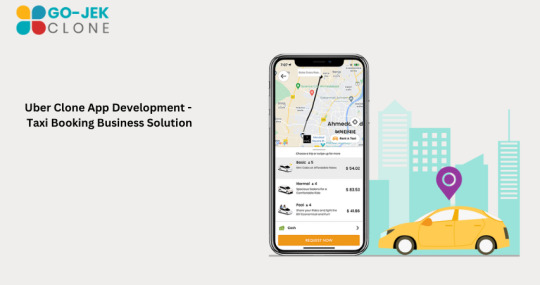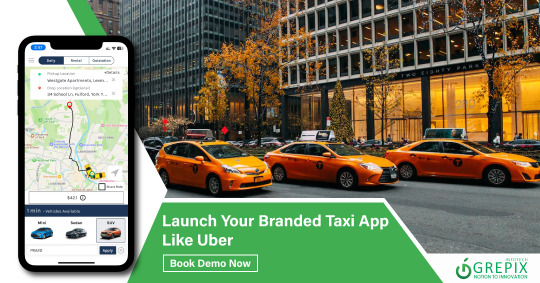#uber-clone
Explore tagged Tumblr posts
Text


You know what, i like you :) (Houseki no Kunis your Clone High)
#clone high#fan art#digital art#my art#abe lincoln#topher bus#behold#the product of my uber autism#i am going to crossover all my previous hyperfixes with clone high#and you will ALL be witness to it#maybe a lil tophabe?
2K notes
·
View notes
Text
Me, adding one more Naruto figure to my work desk, knowing full well no one will realize another one has joined the army:

#i wish someone would know but nope u_u#he be shadow clone jutsuing all over man u_u#silly talks#you'd think I was an uber naruto fanatic with how many figures I have jfkldjasklfja#i like Naruto but it's not the same level as my other stuff#but I like his design and it's what's available so uwu que sera sera~#(it's ok guys I broke away. they stopped shooting I can make one more dumb comment)
3 notes
·
View notes
Text
headcanon time confucious is NOT allowed to drive. he would get a texting ticket or worse every day. nobody likes giving him rides either bc he is an aux hog with an awful music taste. the newly unfrozen clones learn real quick to just LET HIM WALK HOME.
#harriet put up with him the longest#he can always uber with his rich mom money#he MIGHT be allowed a shitty moped#clone high
19 notes
·
View notes
Text

Nanami being half Danish while Isamu being half Swedish lives in my brain considering after Shibuya he would mention; damn, sucks we lost another blonde norse guy. Though, Isamu aging into a graceful metalhead whose life is funded by the Zen’ins just tickles me.
#➤ 𝐀𝐋𝐋 𝐈𝐒 𝐌𝐄𝐀𝐓 & 𝐀𝐒𝐇 { out of character. }#// missing the dreamy uber man ngl#// he's been on the mind while listening to slipknot shHhHH#// anyway he has his father's warm brown eyes / striking looks#// isamu is literally his clone thus the relationship with his mother causes friction#// hence naoto funding his lifestyle on the sole basis: he's genuinely nice to me / we are childhood friends
1 note
·
View note
Link
This is a blog post that gives some insider tips on helping to better your Uber Clone app and the taxi booking business in general so that you can grow your online taxi booking on demand solution grow effortlessly with the help of a white label on demand Uber Clone app development company.
15 notes
·
View notes
Link
Want to create an app like Uber? Read this blog covering the detailed insights about the features, le covering all the Uber Clone App's information, features, app monetization, and more.
15 notes
·
View notes
Text
One thing you should never underestimate about my autism is the ability to combine one special interest with another! I was thinking about ways to insert a version of Kepler into the mha universe and vice versa with the mha characters into the sw universe
Not to mention my existing theory that the mha universe is a branch of the sw one, a FAR distant future where facets of space technology and latent alien dna still exist and their landmarks are named after the small pieces of history that still survive

#jane journals#me: you underestimate the uber instincts of my uber autism 😤😤😤#like ALSO HOT TAKE THAT MY MHA S/I IS JUST A DISTANT DESCENDANT OF BREA#HOW ABOUT THAT#i think in an au where the mha kids are in star war itd be set in the old high republic#not the clone wars era or the new republic or anything#and ofc the kids are all padawan learners#and i was thinking if kep was in mha his skill set is actually already perfect to compliment my s/is???#like. my s/i is a field medic or first responder to terrible accidents and big disasters and she heals#keplers strong suit is reading energy thru the force so the equivalent would be an empath!!#hed be good for calming people who are in shock!#and also reading ppls true intentions when it comes to negotiations in certain situations#itd be perfect!!#ive wanted to draw some things but yanno#i get burn out periods ajfggkg#i think im lowkey in one#but soon!! i hope
15 notes
·
View notes
Text

Uber clone app development refers to the process of creating a mobile app like Uber, which enables users to book rides and connects them with drivers. It is a taxi booking business solution that allows entrepreneurs to start their own on-demand transportation service.
10 notes
·
View notes
Text
How to Build a Taxi Booking App Like inDriver, OLA, and Uber Clone App

In today's fast-paced world, convenience is key when it comes to transportation. Taxi booking apps like inDriver, OLA, and Uber have revolutionized the way people get around. If you're looking to join the ride-hailing industry and create your own successful taxi booking app, you're in the right place. In this article, we'll guide you through the process step by step.
Understanding the Market
Before diving into app development, it's crucial to conduct thorough market research. This research will help you identify your target audience, understand their needs, and analyze your competitors. Here's how you can get started:
Market Analysis
Begin by researching the ride-hailing market in your target region. Identify key players, market trends, and potential gaps in services.
Target Audience
Determine your app's target audience. Are you catering to everyday commuters, tourists, or a specific niche? Understanding your users' preferences is essential.
Building the App
Now that you have a clear understanding of the market, it's time to start building your taxi booking app. This process involves several steps:
Feature List
Create a detailed list of features your app will offer. This should include user registration, driver profiles, GPS tracking, payment processing, and more.
Technology Stack
Choose the right technology stack for your app. Consider whether you want to build a native app for iOS and Android or opt for a cross-platform solution.
Design and User Experience
Invest in an intuitive and user-friendly design. The app's interface should be easy to navigate for both passengers and drivers.
Development Team
Assemble a skilled development team or hire a reputable app development company to bring your vision to life.
Testing and Quality Assurance
Thoroughly test the app for bugs, glitches, and security vulnerabilities. Ensure it functions seamlessly before launch.
Deployment
Release your app on app stores like Google Play Store and Apple App Store. Optimize your app listing with relevant keywords and appealing visuals.
Legal and Regulatory Considerations
Compliance with local regulations is essential in the ride-hailing industry. Be sure to:
Obtain Necessary Permits
Check with local authorities to understand the permits and licenses required to operate a taxi booking service.
Data Privacy
Implement robust data privacy measures to protect user information and comply with data protection laws.
Marketing and Promotion
Once your app is live, you'll need to market it effectively to attract users:
Digital Marketing
Utilize digital marketing strategies like search engine optimization (SEO), social media marketing, and online advertising to reach a wider audience.
Incentives and Referral Programs
Encourage users to refer friends and family by offering incentives and referral bonuses.
Scaling and Expansion
As your app gains popularity, consider expanding your services:
Geographic Expansion
Explore opportunities to launch your app in neighboring cities or countries.
Additional Services
Introduce additional services such as food delivery, package delivery, or carpooling to diversify your offerings.
Conclusion
Building a taxi booking app like inDriver, OLA, and Uber requires careful planning, a dedicated team, and a commitment to delivering a top-notch user experience. By following the steps outlined in this article, you can embark on your journey to creating a successful taxi booking app.
FAQs
How much does it cost to develop a taxi booking app?
The cost of app development can vary significantly depending on factors like features, complexity, and the development team's rates. It's best to get a personalized quote from app developers.
Is it essential to have a mobile app for both iOS and Android?
While having apps for both platforms is ideal for reaching a broader audience, you can start with one platform and expand later based on user demand.
What is the key to attracting drivers to my platform?
Offer competitive commissions, a user-friendly driver app, and efficient payment processing to attract and retain drivers.
How can I ensure passenger safety in my app?
Implement background checks for drivers, allow users to share ride details with friends, and incorporate a ratings and reviews system for drivers.
What are some emerging trends in the ride-hailing industry?
Some emerging trends include electric and autonomous vehicles, eco-friendly options, and improved AI for better route optimization and user experience.
4 notes
·
View notes
Text
Top Challenges in Taxi Booking App Development and How to Overcome Them?
The swift expansion of the ride-hailing sector is altering the dynamics of urban areas. Additionally, taxi booking apps have become an essential part of our everyday lives. As industry leaders like Uber and Lyft set the standard, companies are encouraged to create their own solutions. But there are special problems in developing taxi booking software. Whether it’s an Uber clone or something else.…
0 notes
Text

Deliver delight fast with our ready-made Food Delivery Booking App. Manage orders, track deliveries, and provide excellent service with ease. Try the demo and launch your food delivery business now!
0 notes
Text
Benefits of Investing in a White-Label Taxi App Solution

Hey there! If you're in the transportation or delivery business—whether you're a restaurant offering delivery, a taxi driver, or a parcel delivery firm—you know how important it is to stay ahead of the competition. In today’s fast-paced world, providing an easy and efficient way for your customers to book rides or deliveries can make all the difference. And that's where a white-label taxi app solution comes in.
Now, you might be thinking, “What exactly is a white-label taxi app?” Well, let me break it down for you. A white-label taxi app development solution is a fully customizable app that’s ready to use, but can be branded to reflect your business. It's like getting a ready-made framework for your own taxi booking app development that you can make your own—without having to start from scratch.
So, why should you invest in a white-label taxi app solution? Let me share a few key benefits!
1. Save Time and Money on Development
Let’s face it—developing an app from the ground up takes a lot of time and resources. The good news? With a white-label solution, you skip most of the heavy lifting. A well-built Uber clone app development solution gives you a ready-to-go platform with all the essential features. All you need to do is add your branding, adjust some details, and voilà! You've got your own taxi or delivery app ready to go live. This helps you save valuable time and money.
2. Customizable to Fit Your Brand
One of the biggest advantages of a white-label taxi app solution is the ability to tailor it to your brand. You’re not stuck with someone else’s design or layout. Whether you’re a restaurant offering delivery or a parcel firm looking to streamline your logistics, you can customize the colors, logos, and even the features that best suit your business. It’s the perfect balance between a ready-made solution and a personalized app experience.
3. Features That Matter to Your Customers
A taxi booking app development solution comes with all the essential features your customers expect. Think real-time tracking, easy payment integration, ride scheduling, and push notifications. Plus, you can add or remove features to suit your unique needs. Whether you’re focusing on rides for customers or delivery options for food and parcels, you get the flexibility to make the app truly your own.
4. Stay Competitive in the Market
In today’s world, people are looking for convenience. If you’re in the transportation or delivery business, you’ve probably seen how ride-hailing services like Uber have taken over the market. But don’t worry! You don’t have to reinvent the wheel. A white-label taxi app solution gives you access to the same functionality as the big players, like the famous Uber Clone App, but at a fraction of the cost and with full control over your business operations. This means you can easily compete in the growing taxi, food delivery, or parcel market.
5. Scalable and Ready for Growth
What’s great about taxi app development is that it’s designed to grow with you. As your business expands, so can your app. Whether you’re looking to add more drivers, expand to new locations, or introduce new services, a white-label taxi app can scale to meet your needs. It’s like having a business partner that grows with you every step of the way.
6. Quick Launch, Quick Returns
When you're ready to hit the ground running, the faster you can get your app in the hands of users, the better. A taxi booking app development solution lets you launch quickly, meaning you can start generating revenue almost immediately. There’s no long wait for development, and the market is ready for a solution like yours.
7. Ongoing Support and Updates
Another huge benefit is the continuous support you get with a white-label solution. Your app will be constantly updated to fix bugs, improve performance, and add new features. As the world of ride-hailing and delivery evolves, you’ll be able to stay up-to-date without worrying about maintaining the app yourself.
In conclusion, investing in a white-label taxi app solution is a smart move for anyone in the transportation, restaurant delivery, or parcel service industry. It’s cost-effective, customizable, and provides all the features you need to stay competitive. Whether you’re looking to offer taxi booking app development or a personalized Uber clone app development, this solution can help you launch your business faster, with minimal hassle and maximum potential.
So, are you ready to take your business to the next level with a powerful, branded app? Trust me, it’s a decision you won’t regret!
Let me know if you want more details or need help getting started. I'm here to help you bring your app vision to life!
0 notes
Text
Why Choose an Uber Clone Over Building from Scratch?
In today’s fast-paced digital age, the demand for efficient and reliable on-demand services continues to rise. For entrepreneurs looking to capitalize on the growing trend of ride-hailing and transportation services, the decision of whether to build a custom platform from scratch or opt for an Uber clone solution is a critical one. This article explores the advantages of choosing an Uber clone…
0 notes
Link
Uber Clone App: Profitable And Reliable Taxi Booking App
Uber Clone is a ready-made white-label taxi app solution designed to scale your ride-hailing business on a digital landscape. 100% customized source code. This app is a best profitable and reliable taxi booking app for your taxi booking business.
15 notes
·
View notes
Link
Learn the significance of getting a website along with your Uber clone app for your online taxi booking business. The blog post also explains how to get the most feature rich on demand taxi booking online Uber clone app for your business.
15 notes
·
View notes